A Review of Pile Foundations in Viscoelastic Medium: Dynamic Analysis and Wave Propagation Modeling
Abstract
1. Introduction
2. Longitudinal Dynamic Analysis and Wave Theory
2.1. General Progress in the Longitudinal Soil–Pile Dynamic Interaction Modeling
- Incapable of simulating the stress or strain wave propagation inside the soil.
- Incapable of modeling the multi-phase nature of the soil.
- Incapable of modeling the soil plug inside the pipe pile.
2.2. Progress in the Pile End Soil Modeling and Its Application in Strain Wave Modeling
2.3. Progress in the 3D Soil–Pile Wave Propagation Theory
2.4. Progress in Studies Associated with the Pile Group Effect
3. Horizontal Dynamic Analysis and Wave Theory
3.1. General Progress in Horizontal Soil–Pile Dynamic Interaction Modeling
3.2. Influence of the Vertical Loads on the Horizontal Dynamic Performance of Pile
3.3. Progress in Coupled Soil–Pile–Water Modeling for Offshore Engineering
3.4. Progress in Seismic Performance of Pile Foundations
4. Torsional Dynamic Analysis and Wave Theory
- Smaller detection blind zone.
- Less significant high-frequency interferences.
- More versatile in existing structure health detecting.
- Faster stress wave dissipation.
- More complicated incident wave input equipment.
- Higher requirements for sensor accuracy.
5. Conclusions and Future Work
Author Contributions
Funding
Data Availability Statement
Conflicts of Interest
References
- Nguyen, C.O.; Thi, V.T.D.; Bui, D.T. Pile foundation supporting a waste water treatment reservoir in Binh Chanh soft clay. In Proceedings of the 4th International Conference on Geotechnics for Sustainable Infrastructure Development, Hanoi, Vietnam, 28–29 November 2019; Volume 62, pp. 129–135. [Google Scholar]
- Huang, S.; Khorasanchi, M.; Herfjord, K. Drag amplification of long flexible riser models undergoing multi–mode VIV in uniform currents. J. Fluid Struct. 2011, 27, 342–353. [Google Scholar] [CrossRef]
- Wen, K.; Gong, J.; Wu, Y. The Cascade Control of Natural Gas Pipeline Systems. Appl. Sci. 2019, 9, 481. [Google Scholar] [CrossRef]
- Shi, Y.; Yao, W.; Yu, G. Dynamic Analysis on Pile Group Supported Offshore Wind Turbine under Wind and Wave Load. J. Mar. Sci. Eng. 2022, 10, 1024. [Google Scholar] [CrossRef]
- Lin, Y.; Xiao, J.; Le, C.; Zhang, P.; Chen, Q.; Ding, H. Bearing Characteristics of Helical Pile Foundations for Offshore Wind Turbines in Sandy Soil. J. Mar. Sci. Eng. 2022, 10, 889. [Google Scholar] [CrossRef]
- Chen, L.B.; Yang, X.Y.; Li, L.C.; Wu, W.B.; El Naggar, M.H.; Wang, K.J.; Chen, J.Y. Numerical Analysis of the Deformation Performance of Monopile under Wave and Current Load. Energies 2020, 13, 6431. [Google Scholar] [CrossRef]
- Li, L.C.; Liu, X.; Liu, H.; Wu, W.B.; Lehane, B.M.; Jiang, G.S.; Xu, M.J. Experimental and numerical study on the static lateral performance of monopile and hybrid pile foundation. Ocean Eng. 2022, 255, 111461. [Google Scholar] [CrossRef]
- Vicente, N.; José–Santos, L.G.; Dolores, E.; Pablo, A.; Mario, I.; José–María, S. Monopiles in offshore wind: Preliminary estimate of main dimensions. Ocean Eng. 2017, 133, 253–261. [Google Scholar]
- Li, L.C.; Zheng, M.Y.; Liu, X.; Wu, W.B.; Liu, H.; El Naggar, M.H.; Jiang, G.S. Numerical analysis of the cyclic loading behavior of monopile and hybrid pile foundation. Comput. Geotech. 2022, 144, 104635. [Google Scholar] [CrossRef]
- Kong, J.; Zhang, T.; Gui, F.; Qu, X.; Feng, D. Dynamic Response Analysis of Anchor Piles for Marine Aquaculture under Cyclic Loading. J. Mar. Sci. Eng. 2022, 10, 785. [Google Scholar] [CrossRef]
- Xie, M.; Lopez–Querol, S. Numerical Simulations of the Monotonic and Cyclic Behaviour of Offshore Wind Turbine Monopile Foundations in Clayey Soils. J. Mar. Sci. Eng. 2021, 9, 1036. [Google Scholar] [CrossRef]
- Cheng, X.; Wang, T.; Zhang, J.; Liu, Z.; Cheng, W. Finite element analysis of cyclic lateral responses for large diameter monopiles in clays under different loading patterns. Comput. Geotech. 2021, 134, 104104. [Google Scholar] [CrossRef]
- Kavvadas, M.; Amorosi, A. A constitutive model for structured soils. Géotechnique 2000, 50, 263–273. [Google Scholar] [CrossRef]
- Savvides, A.A.; Papadrakakis, M. A computational study on the uncertainty quantification of failure of clays with a modified Cam-Clay yield criterion. SN Appl. Sci. 2021, 3, 659. [Google Scholar] [CrossRef]
- Malhotra, S. Design and Construction Considerations for Offshore Wind Turbine Foundations. In Proceedings of the ASME 26th International Conference on Offshore Mechanics and Arctic Engineering, San Diego, CA, USA, 10–15 June 2007; pp. 635–647. [Google Scholar]
- Baranov, V.A. On the calculation of an embedded foundation. Vorposy Din. I Progn. 1967, 14, 195–209. [Google Scholar]
- Winkler, E. Die Lehre von der Elasticitaet und Festigkeit Mitbesondere Ruecksicht Auf Ihre Anwendung in der Technik, Fuer Polytechnische Schuhlen, Bauakademien, Ingenieure, Maschienenbauer, Architecten, etc.; H. Dominicus: Prague, Czech Republic, 1867. [Google Scholar]
- Anoyatis, G.; Mylonakis, G. Dynamic Winkler modulus for axially loaded piles. Géotechnique 2012, 62, 521–536. [Google Scholar] [CrossRef]
- Novak, M. Dynamic stiffness and damping of piles. Can. Geotech. J. 1974, 11, 574–598. [Google Scholar] [CrossRef]
- El Naggar, M.H. Vertical and torsional soil reactions for radially inhomogeneous soil layer. Struct. Eng. Mech. 2000, 10, 299–312. [Google Scholar] [CrossRef]
- Wang, K.H.; Wu, W.B.; Zhang, Z.Q.; Leo, C.J. Vertical dynamic response of an inhomogeneous viscoelastic pile. Comput. Geotech. 2010, 37, 536–544. [Google Scholar] [CrossRef]
- Wang, K.H.; Yang, D.Y.; Zhang, Z.Q.; Leo, C.J. A new approach for vertical impedance in radially inhomogeneous soil layer. Int. J. Numer. Anal. Methods Geomech. 2012, 36, 697–707. [Google Scholar] [CrossRef]
- Cui, C.Y.; Meng, K.; Xu, C.S.; Wang, B.L.; Xin, Y. Vertical vibration of a floating pile considering the incomplete bonding effect of the pile–soil interface. Comput. Geotech. 2022, 150, 104894. [Google Scholar] [CrossRef]
- Di, T.Y.; Wu, W.B.; Zhang, Y.P.; Wang, Z.Q.; Liu, X.; Xu, M.J.; Mei, G.X. Semi–analytical approach for nondestructive test for offshore pipe piles considering soil–pile slippage induced by heavy hammer impact. Ocean Eng. 2022, 260, 112080. [Google Scholar] [CrossRef]
- Tajimi, H. Dynamic analysis of a structure embedded in an elastic stratum. In Proceedings of the 4th World Conference on Earthquake Engineering, Santiago, Chile, 13–18 January 1969; pp. 53–69. [Google Scholar]
- Nogami, T.; Novak, M. Soil–pile interaction in vertical vibration. Earthq. Eng. Struct. Dyn. 1976, 4, 277–293. [Google Scholar] [CrossRef]
- Rajapakse, R.K.N.D.; Shah, A.H. On the longitudinal harmonic motion of an elastic bar embedded in an elastic half-space. Int. J. Solids Struct. 1987, 23, 267–285. [Google Scholar] [CrossRef]
- Senjuntichai, T.; Rajapakse, R.K.N.D. Transient response of a circular cavity in a poroelastic medium. Int. J. Numer. Anal. Methods Geomech. 1993, 17, 357–383. [Google Scholar] [CrossRef]
- Wu, W.B.; Wang, K.H.; Zhang, Z.Q.; Leo, C.J. Soil–pile interaction in the pile vertical vibration considering true three–dimensional wave effect of soil. Int. J. Numer. Anal. Methods Geomech. 2013, 37, 2860–2876. [Google Scholar] [CrossRef]
- Zheng, C.J.; Ding, X.M.; Li, P.; Fu, Q. Vertical impedance of an end–bearing pile in viscoelastic soil. Int. J. Numer. Anal. Methods Geomech. 2015, 39, 676–684. [Google Scholar] [CrossRef]
- Zheng, C.J.; Ding, X.M.; Sun, Y.F. Vertical vibration of a pipe pile in viscoelastic soil considering the three dimensional wave effect of soil. Int. J. Geomech. 2015, 16, 04015037. [Google Scholar] [CrossRef]
- Biot, M.A. Theory of Propagation of Elastic Waves in a Fluid–Saturated Porous Solid. I. Low–Frequency Range. J. Acoust. Soc. Am. 1956, 28, 168–178. [Google Scholar] [CrossRef]
- Biot, M.A. Theory of Propagation of Elastic Waves in a Fluid–Saturated Porous Solid. II. Higher Frequency Range. J. Acoust. Soc. Am. 1956, 28, 179–191. [Google Scholar] [CrossRef]
- McNamee, J.; Gibson, R.E. Displacement functions and linear transforms applied to diffusion through porous elastic media. Q. J. Mech. Appl. Math. 1960, 13, 98–111. [Google Scholar] [CrossRef]
- Ai, Z.Y.; Wang, Q.S. A new analytical solution to axisymmetric Biot’s consolidation of a finite soil layer. J. Appl. Math. Mech. 2008, 29, 1617–1624. [Google Scholar] [CrossRef]
- Zeng, X.; Rajapakse, R.K.N.D. Dynamic axial load transfer from elastic bar to poroelastic medium. J. Eng. Mech. 1999, 125, 1048–1055. [Google Scholar] [CrossRef]
- Senjuntichai, T.; Keawsawasvong, S.; Rajapakse, R.K.N.D. Vertical vibration of a circular foundation in a transversely isotropic poroelastic soil. Comput. Geotech. 2020, 122, 103550. [Google Scholar] [CrossRef]
- Liu, H.L.; Zheng, C.J.; Ding, X.M.; Qin, H.Y. Vertical dynamic response of a pipe pile in saturated soil layer. Comput. Geotech. 2014, 61, 57–66. [Google Scholar] [CrossRef]
- Santos, J.E.; Corberó, J.M.; Douglas, J. Static and dynamic behavior of a porous solid saturated by a two–phase fluid. J. Acoust. Soc. Am. 1990, 87, 1428–1438. [Google Scholar] [CrossRef]
- Lo, W.C.; Sposito, G.; Majer, E. Low–frequency dilatational wave propagation through unsaturated porous media containing two immiscible fluids. Transp. Porous Media 2007, 68, 91–105. [Google Scholar] [CrossRef]
- Khoei, A.R.; Mohammadnejad, T. Numerical modeling of multiphase fluid flow in deforming porous media: A comparison between two- and three-phase models for seismic analysis of earth and rockfill dams. Comput. Geotech. 2011, 38, 142–166. [Google Scholar] [CrossRef]
- Shan, Y.; Ma, W.J.; Xiang, K.; Wang, B.L.; Zhou, S.H.; Guo, H.J. Vertical dynamic response of a floating pile in unsaturated poroelastic media based on the fictitious unsaturated soil pile model. Appl. Math. Model. 2022, 109, 209–228. [Google Scholar] [CrossRef]
- Ye, Z.; Ai, Z.Y. Vertical dynamic response of a pile embedded in layered transversely isotropic unsaturated soils. J. Geotech. Geoenviron. Eng. 2022, 148, 04021169. [Google Scholar] [CrossRef]
- Ma, W.J.; Shan, Y.; Xiang, K.; Wang, B.L.; Zhou, S.H. Vertical dynamic impedance of end–bearing pile groups embedded in homogeneous unsaturated soils. Int. J. Numer. Anal. Methods Geomech. 2022, 46, 1154–1176. [Google Scholar] [CrossRef]
- Anoyatis, G.; Di Laora, R.; Mylonakis, G. Axial kinematic response of end–bearing piles to P waves. Int. J. Numer. Anal. Methods Geomech. 2013, 37, 2877–2896. [Google Scholar] [CrossRef]
- Anoyatis, G.; Mylonakis, G.; Tsikas, A. An analytical continuum model for axially loaded end–bearing piles in inhomogeneous soil. Int. J. Numer. Anal. Methods Geomech. 2019, 43, 1162–1183. [Google Scholar] [CrossRef]
- Anoyatis, G.; Mylonakis, G. Analytical Solution for axially loaded piles in two-layer soil. J. Eng. Mech. 2020, 146, 04020003. [Google Scholar] [CrossRef]
- Xiao, S.; Wang, K.; Gao, L.; Wu, J. Dynamic characteristics of a large-diameter pile in saturated soil and its application. Int. J. Numer. Anal. Methods Geomech. 2018, 42, 1255–1269. [Google Scholar] [CrossRef]
- Perić, D.; Cossel, A.E.; Sarna, S.A. Analytical solutions for thermomechanical soil structure interaction in end–bearing energy piles. J. Geotech. Geoenviron. Eng. 2020, 146, 04020047. [Google Scholar] [CrossRef]
- Mindlin, R.D. Force at a point in the interior of a semi-infinite solid. Physics 1936, 7, 195–202. [Google Scholar] [CrossRef]
- Poulos, H.G.; Davis, E.H. The Settlement behaviour of single axially loaded incompressible piles and piers. Géotechnique 1968, 18, 351–371. [Google Scholar] [CrossRef]
- Suraparb, K.; Teerapong, S. Influence of anisotropic properties on vertical vibrations of circular foundation on saturated elastic layer. Mech. Res. Commun. 2018, 94, 102–109. [Google Scholar]
- Li, Z.Y.; Wang, K.H.; Wu, W.B.; Leo, C.J.; Wang, N. Vertical vibration of a large–diameter pipe pile considering the radial inhomogeneity of soil caused by the construction disturbance effect. Comput. Geotech. 2017, 85, 90–102. [Google Scholar] [CrossRef]
- Li, Z.Y.; Gao, Y.F. Effects of inner soil on the vertical dynamic response of a pipe pile embedded in inhomogeneous soil. J. Sound Vib. 2019, 439, 129–143. [Google Scholar] [CrossRef]
- Wu, W.B.; Wang, K.H.; Ma, S.J.; Chin, J.L. Longitudinal dynamic response of pile in layered soil based on virtual soil pile model. J. Cent. South Univ. 2012, 19, 1999–2007. [Google Scholar] [CrossRef]
- Wu, W.B.; Liu, H.; El Naggar, M.H.; Mei, G.X.; Jiang, G.S. Torsional dynamic response of a pile embedded in layered soil based on the fictitious soil pile model. Comput. Geotech. 2016, 80, 190–198. [Google Scholar] [CrossRef]
- Cui, C.Y.; Meng, K.; Pei, H.F. Analytical solution for longitudinal vibration of a floating pile in saturated porous media based on a fictitious saturated soil pile model. Comput. Geotech. 2021, 131, 103942. [Google Scholar] [CrossRef]
- Yang, X.Y.; Wang, L.X.; Wu, W.B.; Liu, H.; Jiang, G.S.; Wang, K.H.; Mei, G.X. Vertical dynamic impedance of a viscoelastic pile in arbitrarily layered soil based on the fictitious soil pile model. Energies 2022, 15, 2087. [Google Scholar] [CrossRef]
- Meng, K.; Cui, C.; Xu, C.; Wang, B.; Xin, Y.; Liang, Z. Approach for defective floating pile embedded in layered saturated soils and application in pile integrity test. Int. J. Numer. Anal. Methods Geomech. 2022, 46, 2893–2912. [Google Scholar] [CrossRef]
- Cai, Y.Y.; Liu, Z.H.; Li, T.B.; Wang, N. Vertical dynamic response of a pile embedded in radially inhomogeneous soil based on fictitious soil pile model. Soil Dyn. Earthq. Eng. 2020, 132, 106038. [Google Scholar] [CrossRef]
- Wu, W.B.; Jiang, G.S.; Huang, S.G.; Leo, C.J. Vertical dynamic response of pile embedded in layered transversely isotropic soil. Math. Probl. Eng. 2014, 2014, 126916. [Google Scholar] [CrossRef]
- Wang, N.; Wang, K.H.; Wu, W.B. Analytical model of vertical vibrations in piles for different tip boundary conditions: Parametric study and Applications. J. Zhejiang Univ. Sci. A 2013, 14, 79–93. [Google Scholar] [CrossRef]
- Guan, W.J.; Wu, W.B.; Jiang, G.S.; Leo, C.J.; Deng, G.D. Torsional dynamic response of tapered pile considering compaction effect and stress diffusion effect. J. Cent. South Univ. 2020, 27, 3839–3851. [Google Scholar] [CrossRef]
- Wang, L.X.; Wu, W.B.; Zhang, Y.P.; Li, L.C.; Liu, H.; El Naggar, M.H. Nonlinear analysis of single pile settlement based on stress bubble fictitious soil pile model. Int. J. Numer. Anal. Methods Geomech. 2022, 46, 1187–1204. [Google Scholar] [CrossRef]
- Wang, N.; Le, Y.; Hu, W.T.; Fang, T.; Zhu, B.T.; Geng, D.X.; Xu, C.J. New interaction model for the annular zone of stepped piles with respect to their vertical dynamic characteristics. Comput. Geotech. 2020, 117, 103256. [Google Scholar] [CrossRef]
- Le, Y.; Wang, N.; Hu, W.T.; Geng, D.X.; Jiang, Y.L. Torsional dynamic impedance of a stepped pile based on the wedged soil model. Comput. Geotech. 2020, 128, 103854. [Google Scholar] [CrossRef]
- Gao, L.; Wang, K.H.; Wu, J.T.; Xiao, S.; Wang, N. Analytical solution for the dynamic response of a pile with a variable–sectioninterface in low–strain integrity testing. J. Sound Vib. 2017, 395, 328–340. [Google Scholar] [CrossRef]
- Gao, L.; Wang, K.H.; Xiao, S.; Wu, W.B. Dynamic response of a pile considering the interaction of pile variable cross section with the surrounding layered soil. Int. J. Numer. Anal. Methods Geomech. 2017, 41, 1196–1214. [Google Scholar] [CrossRef]
- Steinbach, J.; Vey, E. Caisson evaluation by stress wave propagation method. J. Geotech. Eng. Div. Am. Soc. Civ. Eng. 1975, 101, 361–378. [Google Scholar] [CrossRef]
- Smith, I.M.; Chow, Y.K. Three-dimensional analysis of pile drivability. In Proceedings of the 2nd International Conference on Numerical Methods in Offshore Piling, Austin, TX, USA, 29–30 April 1982; pp. 1–20. [Google Scholar]
- Fukuhara, T.; Kakurai, M.; Sugimoto, M. Analytical evaluation of defective piles. In Proceedings of the 14th International Conference on the Application of Stress-Wave Theory to Piles, The Hague, The Netherlands, 21–24 September 1992; pp. 563–569. [Google Scholar]
- Chow, Y.K.; Phoon, K.K.; Chow, W.F.; Wong, K.Y. Low strain integrity testing of piles: Three–dimensional effects. J. Geotech. Geoenviron. Eng. 2003, 129, 1057–1062. [Google Scholar] [CrossRef]
- Ding, X.M.; Liu, H.L.; Liu, J.Y.; Chen, Y.M. Wave propagation in a pipe pile for low–strain integrity testing. J. Eng. Mech. 2011, 137, 598–609. [Google Scholar] [CrossRef]
- Ding, X.M.; Liu, H.L.; Kong, G.Q.; Zheng, C.J. Time–domain analysis of velocity waves in a pipe pile due to a transient point load. Comput. Geotech. 2014, 58, 101–116. [Google Scholar] [CrossRef]
- Zheng, C.J.; Kouretzis, G.P.; Ding, X.M.; Liu, H.L.; Poulos, H.G. Three-dimensional effects in low-strain integrity testing of piles: Analytical solution. Can. Geotech. J. 2016, 53, 225–235. [Google Scholar] [CrossRef]
- Zheng, C.J.; Ding, X.M.; Kouretzis, G.P.; Liu, H.L.; Sun, Y. Three-dimensional propagation of waves in piles during low–strain integrity tests. Géotechnique 2018, 68, 358–363. [Google Scholar] [CrossRef]
- Zheng, C.J.; Kouretzis, G.P.; Ding, X.M.; Luan, L.B. Vertical vibration of end–bearing single piles in poroelastic soil considering three–dimensional soil and pile wave effects. Comput. Geotech. 2022, 146, 104740. [Google Scholar] [CrossRef]
- Zheng, C.J.; Liu, H.L.; Ding, X.M.; Kouretzis, G.P.; Sloan, S.W.; Poulos, H.G. Non-axisymmetric response of piles in low-strain integrity testing. Géotechnique 2017, 67, 181–186. [Google Scholar] [CrossRef]
- Dai, D.H.; El Naggar, M.H.; Zhang, N.; Gao, Y.F. Kinematic response of an end-bearing pile subjected to vertical P-wave considering the three-dimensional wave scattering. Comput. Geotech. 2020, 120, 103368. [Google Scholar] [CrossRef]
- Meng, K.; Cui, C.Y.; Liang, Z.M.; Li, H.J.; Pei, H.F. A new approach for longitudinal vibration of a large–diameter floating pipe pile in visco-elastic soil considering the three-dimensional wave effects. Comput. Geotech. 2020, 128, 103840. [Google Scholar] [CrossRef]
- Meng, K.; Su, H.F. Analytical model of large-diameter viscoelastic floating pile and application in pile low–strain integrity testing. Soil Dyn. Earthq. Eng. 2022, 158, 107296. [Google Scholar] [CrossRef]
- Zhang, Y.P.; Liu, H.; Wu, W.B.; Wang, L.X.; Jiang, G.S. A 3D analytical model for distributed low strain test and parallel seismic test of pipe piles. Ocean Eng. 2021, 225, 108828. [Google Scholar] [CrossRef]
- Lu, Z.T.; Wang, Z.L.; Liu, D.J. Study on low–strain integrity testing of pipe–pile using the elastodynamic finite integration technique. Int. J. Numer. Anal. Methods Geomech. 2013, 37, 536–550. [Google Scholar] [CrossRef]
- Lu, Z.T.; Wang, Z.L.; Liu, D.J.; Feng, X.; Ma, H.C.; Tan, X.H. Propagation characteristics of flexural wave and the reflection from vertical cracks during pipe–pile integrity testing. Int. J. Numer. Anal. Methods Geomech. 2022, 46, 1660–1684. [Google Scholar] [CrossRef]
- Lü, S.H.; Wang, K.H.; Wu, W.B.; Leo, C.J. Longitudinal vibration of a pile embedded in layered soil considering the transverse inertia effect of pile. Comput. Geotech. 2014, 62, 90–99. [Google Scholar] [CrossRef]
- Banerjee, J.R.; Ananthapuvirajah, A.; Papkov, S.O. Dynamic stiffness matrix of a conical bar using the Rayleigh–Love theory with applications. Eur. J. Mech. A Solid. 2020, 83, 104020. [Google Scholar] [CrossRef]
- Zhang, Y.P.; Di, T.Y.; El Naggar, M.H.; Wu, W.B.; Liu, H.; Jiang, G.S. Modified Rayleigh–Love rod model for 3D dynamic analysis of large–diameter thin–walled pipe pile embedded in multilayered soils. Comput. Geotech. 2022, 149, 104853. [Google Scholar] [CrossRef]
- Wu, W.B.; El Naggar, M.H.; Abdlrahem, M.; Mei, G.X.; Wang, K.H. New interaction model for vertical dynamic response of pipe piles considering soil plug effect. Can. Geotech. J. 2017, 54, 987–1001. [Google Scholar] [CrossRef]
- Wu, W.B.; Jiang, G.S.; Huang, S.G.; Mei, G.X.; Leo, C.J. A new analytical model to study the influence of weld on the vertical dynamic response of prestressed pipe pile. Int. J. Numer. Anal. Methods Geomech. 2017, 41, 1247–1266. [Google Scholar] [CrossRef]
- Liu, H.; Wu, W.B.; Jiang, G.S.; El Naggar, M.H.; Mei, G.X. Influence of soil plug effect on the vertical dynamic response of large diameter pipe piles. Ocean Eng. 2018, 157, 13–25. [Google Scholar] [CrossRef]
- Liu, H.; Wu, W.B.; Jiang, G.S.; El Naggar, M.H.; Mei, G.X.; Liang, R.Z. Benefits from using two receivers for the interpretation of low-strain integrity tests on pipe piles. Can.Geotech. J. 2019, 56, 1433–1447. [Google Scholar] [CrossRef]
- Liu, H.; Wu, W.B.; Yang, X.Y.; Jiang, G.S.; El Naggar, M.H.; Mei, G.X.; Liang, R.Z. Detection sensitivity analysis of pipe pile defects during low-strain integrity testing. Ocean Eng. 2019, 194, 106627. [Google Scholar] [CrossRef]
- Wu, W.B.; Liu, H.; Yang, X.Y.; Jiang, G.S.; El Naggar, M.H.; Mei, G.X.; Liang, R.Z. New method to calculate apparent phase velocity of open-ended pipe pile. Can. Geotech. J. 2020, 57, 127–138. [Google Scholar] [CrossRef]
- Liu, H.; Wu, W.B.; Ni, X.Y.; Yang, X.Y.; Jiang, G.S.; El Naggar, M.H.; Liang, R.Z. Influence of soil mass on the vertical dynamic characteristics of pipe piles. Comput. Geotech. 2020, 126, 103730. [Google Scholar] [CrossRef]
- Dowling, J.; Finn, W.D.L.; Taiebat, M. Load distribution in large pile groups under static and dynamic loading. Bull. Earthq. Eng. 2016, 14, 1461–1474. [Google Scholar] [CrossRef]
- Bharathi, M.; Dubey, R.N.; Shukla, S.K. Numerical simulation of the dynamic response of batter piles and pile groups. Bull. Earthq. Eng. 2022, 20, 3239–3263. [Google Scholar] [CrossRef]
- Qu, L.M.; Ding, X.M.; Kouretzis, G.P.; Zheng, C.J. Dynamic interaction of soil and end–bearing piles in sloping ground: Numerical simulation and analytical solution. Comput. Geotech. 2021, 134, 103917. [Google Scholar] [CrossRef]
- Kaynia, A.M.; Kausel, E. Dynamic behaviour of pile groups. In Proceedings of the Second International Conference on Numerical Methods for Offshore Piling, Austin, TX, USA, 29–30 April 1982; pp. 509–532. [Google Scholar]
- Dobry, R.; Gazetas, G. Simple method for dynamic stiffness and damping of floating pile groups. Géotechnique 1988, 38, 557–574. [Google Scholar] [CrossRef]
- Mylonakis, G.; Gazetas, G. Vertical vibration and additional distress of grouped piles in layered soil. Soils Found. 1998, 38, 1–14. [Google Scholar] [CrossRef]
- Zhang, S.P.; Cui, C.Y.; Yang, G. Vertical dynamic impedance of pile groups partially embedded in multilayered, transversely isotropic, saturated soils. Soil Dyn. Earthq. Eng. 2019, 117, 106–115. [Google Scholar] [CrossRef]
- Luan, L.B.; Zheng, C.J.; Kouretzis, G.P.; Cao, G.W.; Zhou, H. Development of a three-dimensional soil model for the dynamic analysis of end-bearing pile groups subjected to vertical loads. Int. J. Numer. Anal. Methods Geomech. 2019, 43, 1784–1793. [Google Scholar] [CrossRef]
- Luan, L.B.; Ding, X.M.; Cao, G.W.; Deng, X. Development of a coupled pile–to–pile interaction model for the dynamic analysis of pile groups subjected to vertical loads. Acta Geotech. 2020, 15, 3261–3269. [Google Scholar] [CrossRef]
- Cheng, X.L.; Lu, J.Q.; Zhuang, Q.; El Naggar, M.H.; Lu, Q.; Tu, W.B. Lateral cyclic behavior of OWT tripod suction bucket foundation in clays. Ocean Eng. 2022, 265, 112635. [Google Scholar] [CrossRef]
- Mcclelland, B.; Focht, J.A. Soil Modulus for laterally loaded piles. J. Soil Mech. Found. Div. Am. Soc. Civ. Eng. 1956, 82, 1–22. [Google Scholar] [CrossRef]
- Nogami, T.; Otani, J.; Konagai, K.; Chen, S.L. Nonlinear soil–pile interaction model for dynamic lateral motion. J. Geotech. Eng. 1992, 118, 89–106. [Google Scholar] [CrossRef]
- Yao, S.; Nogami, T. Lateral cyclic response of a pile in viscoelastic Winkler subgrade. J. Eng. Mech. 1994, 120, 758–775. [Google Scholar] [CrossRef]
- El Naggar, M.H.; Novak, M. Nonlinear lateral interaction in pile dynamics. Soil Dyn. Earthq. Eng. 1995, 14, 141–157. [Google Scholar] [CrossRef]
- Gerolymos, N.; Gazetas, G. Winkler model for lateral response of rigid caisson foundations in linear soil. Soil Dyn. Earthq. Eng. 2006, 26, 347–361. [Google Scholar] [CrossRef]
- Novak, M.; Aboul–Ella, F.; Nogami, T. Dynamic soil reactions for plane strain case. J. Eng. Mech. Div. Am. Soc. Civ. Eng. 1978, 104, 953–959. [Google Scholar] [CrossRef]
- Biot, M.A. Bending of an infinite beam on an elastic foundation. J. Appl. Mech. 1937, 59, A1–A7. [Google Scholar] [CrossRef]
- Vesic, A.B. Bending of beams resting on isotropic elastic solid. J. Soil Mech. Found. Eng. 1961, 87, 35–53. [Google Scholar]
- Okeagu, B.; Abdel-Sayed, G. Coefficients of soil reaction for buried flexible conduits. J. Geotech. Eng. 1984, 110, 908–922. [Google Scholar] [CrossRef]
- Sadrekarimi, J.; Akbarzad, M. Comparative study of methods of determination of coefficient of subgrade reaction. Electron. J. Geotech. Eng. 2009, 14, 45–61. [Google Scholar]
- Prendergast, L.J.; Gavin, K. A comparison of initial stiffness formulations for small–strain soil–pile dynamic Winkler modelling. Soil Dyn. Earthq. Eng. 2016, 81, 27–41. [Google Scholar] [CrossRef]
- Bouzid, D.A. Numerical investigation of large–diameter monopiles in sands: Critical review and evaluation of both API and newly proposed p–y curves. Int. J. Geomech. 2018, 18, 04018141. [Google Scholar] [CrossRef]
- Hu, A.F.; Fu, P.; Xia, C.Q.; Xie, K.H. Horizontal impedances of saturated soil layer with radially inhomogeneous boundary zone. Soil Dyn. Earthq. Eng. 2018, 111, 184–192. [Google Scholar] [CrossRef]
- Liu, H.; Li, J.X.; Yang, X.Y.; Chen, L.B.; Wu, W.B.; Wen, M.J.; Jiang, M.J.; Guo, C.J. Lateral dynamic response of offshore pipe piles considering effect of superstructure. Energies 2022, 15, 6759. [Google Scholar] [CrossRef]
- Zhang, M.; Shang, W.; Wang, X.H.; Chen, Y.F. Lateral dynamic analysis of single pile in partially saturated soil. Eur. J. Environ. Civ. Eng. 2019, 23, 1156–1177. [Google Scholar] [CrossRef]
- Zhang, M.; Zhao, C.L.; Xu, C.J. Lateral dynamic response of pile group embedded in unsaturated soil. Soil Dyn. Earthq. Eng. 2021, 142, 106559. [Google Scholar] [CrossRef]
- Wu, W.B.; Yang, Z.J.; Liu, X.; Zhang, Y.P.; Liu, H.; El Naggar, M.H.; Xu, M.J.; Mei, G.X. Horizontal dynamic response of pile in unsaturated soil considering its construction disturbance effect. Ocean Eng. 2022, 245, 110483. [Google Scholar] [CrossRef]
- Yang, X.Y.; Zhang, Y.P.; Liu, H.; Fan, X.X.; Jiang, G.S.; El Naggar, M.H.; Wu, W.B.; Liu, X. Analytical solution for lateral dynamic response of pile foundation embedded in unsaturated soil. Ocean Eng. 2022, 265, 112518. [Google Scholar] [CrossRef]
- Ding, X.M.; Luan, L.B.; Zheng, C.J.; Zhou, W. Influence of the second–order effect of axial load on lateral dynamic response of a pipe pile in saturated soil layer. Soil Dyn. Earthq. Eng. 2017, 103, 86–94. [Google Scholar] [CrossRef]
- Zheng, C.J.; Luan, L.B.; Qin, H.Y.; Zhou, H. Horizontal dynamic response of a combined loaded large–diameter pipe pile simulated by the Timoshenko beam theory. Int. J. Struct. Stab. Dyn. 2020, 20, 2071003. [Google Scholar] [CrossRef]
- Chen, L.B.; Wu, W.B.; Liu, H.; Hu, A.F.; Newson, T.; El Naggar, M.H.; Mei, G.X.; Xu, M.J. Analytical solution for lateral vibration of offshore pipe piles considering hydrodynamic pressure. Comput. Geotech. 2022, 151, 104926. [Google Scholar] [CrossRef]
- Lu, W.J.; Zhang, G. Influence mechanism of vertical–horizontal combined loads on the response of a single pile in sand. Soils Found. 2018, 58, 1228–1239. [Google Scholar] [CrossRef]
- Mu, L.; Kang, X.; Feng, K.; Huang, M.; Cao, J. Influence of vertical loads on lateral behaviour of monopiles in sand. Eur. J. Environ. Civ. Eng. 2018, 22, s286–s301. [Google Scholar] [CrossRef]
- Li, Q.; Gavin, K.G.; Askarinejad, A.; Prendergast, L.J. Experimental and numerical investigation of the effect of vertical loading on the lateral behaviour of monopiles in sand. Can. Geotech. J. 2022, 59, 652–666. [Google Scholar] [CrossRef]
- Morison, J.R.; Johnson, J.W.; Schaaf, S.A. The force exerted by surface waves on piles. J. Petrol. Technol. 1950, 2, 149–154. [Google Scholar] [CrossRef]
- Chakrabarti, S.K. Hydrodynamic coefficients for a vertical tube in an array. Appl. Ocean Res. 1981, 3, 2–12. [Google Scholar] [CrossRef]
- Chakrabarti, S.K. Inline and transverse forces on a tube array in tandem with waves. Appl. Ocean Res. 1982, 4, 25–32. [Google Scholar] [CrossRef]
- Cai, S.Q.; Long, X.M.; Wang, S.G. Forces and torques exerted by internal solitons in shear flows on cylindrical piles. Appl. Ocean Res. 2008, 30, 72–77. [Google Scholar] [CrossRef]
- Xie, J.S.; Jian, Y.J.; Yang, L.G. Strongly nonlinear internal soliton load on a small vertical circular cylinder in two–layer fluids. Appl. Math. Model. 2010, 34, 2089–2101. [Google Scholar] [CrossRef]
- Beji, S. Applications of Morison’s equation to circular cylinders of varying cross–sections and truncated forms. Ocean Eng. 2019, 187, 106156. [Google Scholar] [CrossRef]
- Zan, X.X.; Lin, Z.H. On the applicability of Morison equation to force estimation induced by internal solitary wave on circular cylinder. Ocean Eng. 2020, 198, 106966. [Google Scholar] [CrossRef]
- Li, J.Y.; Liu, Z.; Liao, S.J.; Liu, Q. Fully nonlinear interfacial periodic waves in a two–layer fluid with a rigid upper boundary and their loads on a cylindrical pile. Ocean Eng. 2022, 260, 112014. [Google Scholar] [CrossRef]
- Mindao, G.; Lihua, H.; Shaoshu, S. Experimental study for the wave forces on pile groups due to regular waves. In Proceedings of the 2nd International Conference on Coastal and Port Engineering in Developing Countries (COPEDEC), Beijing, China, 7–11 September 1987; pp. 1956–1965. [Google Scholar]
- Bonakdar, L.; Oumeraci, H.; Etemad-Shahidi, A. Wave load formulae for prediction of wave–induced forces on a slender pile within pile groups. Coast. Eng. 2015, 102, 49–68. [Google Scholar] [CrossRef]
- Liaw, C.Y.; Chopra, A.K. Dynamics of towers surrounded by water. Earthq. Eng. Struct. Dyn. 1974, 3, 33–49. [Google Scholar] [CrossRef]
- Sun, K.; Nogami, T. Earthquake induced hydrodynamic pressure on axisymmetric offshore structures. Earthq. Eng. Struct. Dyn. 1991, 20, 429–440. [Google Scholar] [CrossRef]
- Du, X.L.; Wang, P.G.; Zhao, M. Simplified formula of hydrodynamic pressure on circular bridge piers in the time domain. Ocean Eng. 2014, 85, 44–53. [Google Scholar] [CrossRef]
- Fu, P.; Xie, K. Lateral vibration of offshore piles considering pile-water interaction. Int. J. Struct. Stab. Dyn. 2019, 19, 1950147. [Google Scholar] [CrossRef]
- Wang, P.G.; Zhao, M.; Du, X.L. Analytical solution and simplified formula for earthquake induced hydrodynamic pressure on elliptical hollow cylinders in water. Ocean Eng. 2018, 148, 149–160. [Google Scholar] [CrossRef]
- Chen, L.B.; Wu, W.B.; Liu, H.; El Naggar, M.H.; Wen, M.J.; Wang, K.H. Influence of defects on the lateral dynamic characteristics of offshore piles considering hydrodynamic pressure. Ocean Eng. 2022, 260, 111894. [Google Scholar] [CrossRef]
- Huang, Y.M.; Wang, P.G.; Zhao, M.; Zhang, C.; Du, X.L. Dynamic responses of an end–bearing pile subjected to horizontal earthquakes considering water–pile–soil interactions. Ocean Eng. 2022, 238, 109726. [Google Scholar] [CrossRef]
- Chen, L.B.; Li, J.X.; Wu, W.B.; Liu, H.; Yao, Y.; Zhang, P. New method to calculate the kinematic response of offshore pipe piles under seismic S-waves. Soil Dyn. Earthq. Eng. 2023, 165, 107651. [Google Scholar] [CrossRef]
- Zhao, H.Y.; Jeng, D.S.; Liao, C.C.; Zhu, J.F. Three-dimensional modeling of wave-induced residual seabed response around a mono–pile foundation. Coast. Eng. 2017, 128, 1–21. [Google Scholar] [CrossRef]
- Sui, T.T.; Zhang, C.; Jeng, D.S.; Guo, Y.K.; Zheng, J.H.; Zhang, W.; Shi, J. Wave-induced seabed residual response and liquefaction around a monopile foundation with various embedded depth. Ocean Eng. 2019, 173, 157–173. [Google Scholar] [CrossRef]
- Wang, P.G.; Zhao, M.; Du, X.L.; Liu, J.B.; Xu, C.S. Wind, wave and earthquake responses of offshore wind turbine on monopile foundation in clay. Soil Dyn. Earthq. Eng. 2018, 113, 47–57. [Google Scholar] [CrossRef]
- Timoshenko, S.P. On the correction for shear of the differential equation for transverse vibration of prismatic bars. Lond. Edinb. Dubl. Phil. Mag 1921, 41, 744–746. [Google Scholar] [CrossRef]
- Kaneko, T. On Timoshenko’s correction for shear in vibrating beams. J. Phys. D Appl. Phys. 1975, 8, 1927–1936. [Google Scholar] [CrossRef]
- Wu, J.T.; El Naggar, M.H.; Wang, K.H.; Wu, W.B. Lateral vibration characteristics of an extended pile shaft under low–strain integrity test. Soil Dyn. Earthq. Eng. 2019, 126, 105812. [Google Scholar] [CrossRef]
- Wu, T.; Sun, H.L.; Cai, Y.Q.; Wu, J.T.; Zhang, Y.P. Analytical study on the dynamic responses of a sheet–pile groin subjected to transient lateral impulses. Ocean Eng. 2022, 249, 110875. [Google Scholar] [CrossRef]
- Wu, T.; Sun, H.L.; Aires, R.G.; Cai, Y.Q.; Wu, J.T.; Zhang, Y.P. Analytical solution for sheet–pile groin vibrations under tidal bore excitation. Mar. Georesour. Geotechnol. 2022, 1–16. [Google Scholar] [CrossRef]
- Gazetas, G. Seismic response of end-bearing single piles. Soil Dyn. Earthq. Eng. 1984, 3, 82–93. [Google Scholar] [CrossRef]
- Yang, Z.J.; Wu, W.B.; Liu, H.; Zhang, Y.P.; Liang, R.Z. Flexible support of a pile embedded in unsaturated soil under Rayleigh waves. Earthq. Eng. Struct. Dyn. 2022, 52, 226–247. [Google Scholar] [CrossRef]
- Yang, Z.J.; Zhang, Y.P.; Wen, M.J.; Wu, W.B.; Liu, H. Dynamic response of pile embedded in unsaturated soil under SH waves considering effect of superstructure. J. Sound Vib. 2022, 541, 117278. [Google Scholar] [CrossRef]
- Yang, X.Y.; Jiang, G.S.; Liu, H.; Wu, W.B.; Mei, G.X.; Yang, Z.J. Horizontal dynamic response of tapered pile in arbitrary layered soil. Energies 2022, 15, 3193. [Google Scholar] [CrossRef]
- Dong, R.; Shan, Z.D.; Jing, L.P.; Xie, Z.N.; Yin, Z.Y.; Zheng, T. Rigorous solution for kinematic response of end–bearing pile under vertically incident P-waves. Comput. Geotech. 2022, 150, 104896. [Google Scholar] [CrossRef]
- Torshizi, M.F.; Saitoh, M.; Álamo, G.M.; Goit, C.S. Influence of pile radius on the pile head kinematic bending strains of end–bearing pile groups. Soil Dyn. Earthq. Eng. 2018, 105, 184–203. [Google Scholar] [CrossRef]
- Álamo, G.M.; Bordón, J.D.R.; Aznárez, J.J.; Maeso, O. Relevance of soil–pile tangential tractions for the estimation of kinematic seismic forces: Formulation and setting of a Winkler approach. Appl. Math. Model. 2018, 59, 1–19. [Google Scholar] [CrossRef]
- Dezi, F.; Carbonari, S.; Leoni, G. A model for the 3D kinematic interaction analysis of pile groups in layered soils. Earthq. Eng. Struct. Dyn. 2009, 38, 1281–1305. [Google Scholar] [CrossRef]
- Kaynia, A.M.; Kausel, E. Dynamics of piles and pile groups in layered soil media. Soil Dyn. Earthq. Eng. 1991, 10, 386–401. [Google Scholar] [CrossRef]
- Zheng, C.J.; Luo, T.; Kouretzis, G.; Ding, X.M.; Luan, L.B. Transverse seismic response of end–bearing pipe piles to S–waves. Int. J. Numer. Anal. Methods Geomech. 2022, 46, 1919–1940. [Google Scholar] [CrossRef]
- Dai, D.H.; Zhang, Y.J.; Zhang, Y.F.; Wang, Z.B.; Li, Z.Y. Kinematic response of end–bearing piles under the excitation of vertical p–waves considering the construction effect. Appl. Sci. 2022, 12, 3468. [Google Scholar] [CrossRef]
- El Naggar, M.H.; Shayanfar, M.A.; Kimiaei, M.; Aghakouchak, A.A. Simplified BNWF model for nonlinear seismic response analysis of offshore piles with nonlinear input ground motion analysis. Can. Geotech. J. 2005, 42, 365–380. [Google Scholar] [CrossRef]
- Vallabhan, C.V.G.; Das, Y.C. Modified Vlasov model for beams on elastic foundations. J. Geotech. Eng. 1991, 117, 956–966. [Google Scholar] [CrossRef]
- Laora, R.D.; Rovithis, E. Kinematic bending of fixed–head piles in nonhomogeneous soil. J. Geotech. Geoenviron. Eng. 2015, 141, 04014126. [Google Scholar] [CrossRef]
- Liu, Q.J.; Deng, F.J.; He, Y.B. Transverse seismic kinematics of single piles by a modified Vlasov model. Int. J. Numer. Anal. Methods Geomech. 2014, 38, 1953–1968. [Google Scholar] [CrossRef]
- Ke, W.H.; Liu, Q.J.; Zhang, C. Kinematic bending of single piles in layered soil. Acta Geotech. 2019, 14, 101–110. [Google Scholar] [CrossRef]
- Filipich, C.P.; Rosales, M.B. A further study about the behaviour of foundation piles and beams in a Winkler-Pasternak soil. Int. J. Mech. Sci. 2002, 44, 21–36. [Google Scholar] [CrossRef]
- Ke, W.; Zhang, C. A closed–form solution for kinematic bending of end–bearing piles. Soil Dyn. Earthq. Eng. 2017, 103, 15–20. [Google Scholar] [CrossRef]
- Di Laora, R.; Mandolini, A.; Mylonakis, G. Insight on kinematic bending of flexible piles in layered soil. Soil Dyn. Earthq. Eng. 2012, 43, 309–322. [Google Scholar] [CrossRef]
- Mucciacciaro, M.; Sica, S. Nonlinear soil and pile behaviour on kinematic bending response of flexible piles. Soil Dyn. Earthq. Eng. 2018, 107, 195–213. [Google Scholar] [CrossRef]
- Maheshwari, B.K.; Truman, K.Z.; El Naggar, M.H.; Gould, P.L. Three–dimensional finite element nonlinear dynamic analysis of pile groups for lateral transient and seismic excitations. Can. Geotech. J. 2004, 41, 118–133. [Google Scholar] [CrossRef]
- Stacul, S.; Squeglia, N. Simplified assessment of pile–head kinematic demand in layered soil. Soil Dyn. Earthq. Eng. 2020, 130, 105975. [Google Scholar] [CrossRef]
- Li, Z.Y.; Gao, Y.F. Torsional vibration of a large-diameter pipe pile embedded in inhomogeneous soil. Ocean Eng. 2019, 172, 737–758. [Google Scholar] [CrossRef]
- Zhou, H.; Yuan, J.; Liu, H. A general analytical solution for lateral soil response of non–circular cross–sectional pile segment. Appl. Math. Model. 2019, 71, 601–631. [Google Scholar] [CrossRef]
- Novak, M.; Howell, J.F. Torsional vibration of pile foundations. J. Geotech. Eng. 1977, 103, 271–285. [Google Scholar] [CrossRef]
- Wu, W.B.; Jiang, G.S.; Lü, S.H.; Huang, S.G.; Xie, B.H. Torsional dynamic impedance of a tapered pile considering its construction disturbance effect. Mar. Georesour. Geotec. 2016, 34, 321–330. [Google Scholar] [CrossRef]
- Liu, H.; Jiang, G.S.; El Naggar, M.H.; Wu, W.B.; Mei, G.X.; Liang, R.Z. Influence of soil plug effect on the torsional dynamic response of a pipe pile. J. Sound Vib. 2017, 410, 231–248. [Google Scholar] [CrossRef]
- Zhang, Y.P.; Yang, X.Y.; Wu, W.B.; El Naggar, M.H.; Jiang, G.S.; Liang, R.Z. Torsional complex impedance of pipe pile considering pile installation and soil plug effect. Soil Dyn. Earthq. Eng. 2020, 131, 106010. [Google Scholar] [CrossRef]
- Cai, Y.Q.; Chen, G.; Xu, C.J.; Wu, D.Z. Torsional response of pile embedded in a poroelastic medium. Soil Dyn. Earthq. Eng. 2006, 26, 1143–1148. [Google Scholar] [CrossRef]
- Zhang, Y.P.; Liu, H.; Wu, W.B.; Wang, S.; Wu, T.; Wen, M.J.; Jiang, G.S.; Mei, G.X. Interaction model for torsional dynamic response of thin-wall pipe piles embedded in both vertically and radially inhomogeneous soil. Int. J. Geomech. 2021, 21, 04021185. [Google Scholar] [CrossRef]
- Li, Z.Y.; Gao, Y.F. Influence of the inner soil on the torsional vibration of a pipe pile considering the construction disturbance. Acta Geotech. 2021, 16, 3647–3665. [Google Scholar] [CrossRef]
- Wang, K.H.; Zhang, Z.Q.; Leo, C.J.; Xie, K.H. Dynamic torsional response of an end bearing pile in transversely isotropic saturated soil. J. Sound Vib. 2009, 327, 440–453. [Google Scholar] [CrossRef]
- Liu, K.F.; Zhang, Z.Q. Dynamic response of an inhomogeneous elastic pile in a multilayered saturated soil to transient torsional load. Math. Probl. Eng. 2021, 2021, 5528237. [Google Scholar] [CrossRef]
- Ma, W.J.; Shan, Y.; Xiang, K.; Wang, B.L.; Zhou, S.H. Torsional dynamic response of a pipe pile in homogeneous unsaturated soils. Comput. Geotech. 2022, 143, 104607. [Google Scholar] [CrossRef]
- Wang, K.H.; Zhang, Z.Q.; Leo, C.J.; Xie, K.H. Dynamic torsional response of an end bearing pile in saturated poroelastic medium. Comput. Geotech. 2008, 35, 450–458. [Google Scholar] [CrossRef]
- Zhang, Y.P.; Jiang, G.S.; Wu, W.B.; El Naggar, M.H.; Liu, H.; Wen, M.J.; Wang, K.H. Analytical solution for distributed torsional low strain integrity test for pipe pile. Int. J. Numer. Anal. Methods Geomech. 2021, 46, 47–67. [Google Scholar] [CrossRef]
- Liu, D.J.; Liu, Y.Z.; Wang, J.Y. Theoretical study on torsional wave applied in low strain dynamic testing of piles. Chin. J. Geotech. Eng. 2003, 25, 283–287. (In Chinese) [Google Scholar]
- Zhang, Y.P.; Wang, Z.Q.; El Naggar, M.H.; Wu, W.B.; Wang, L.X.; Jiang, G.S. Three-dimensional wave propagation in a solid pile during torsional low strain integrity test. Int. J. Numer. Anal. Methods Geomech. 2022, 46, 2398–2411. [Google Scholar] [CrossRef]
- Zhang, Y.P.; El Naggar, M.H.; Wu, W.B.; Wang, Z.Q. Torsional low-strain test for nondestructive integrity examination of existing high-pile foundation. Sensors 2022, 22, 5330. [Google Scholar] [CrossRef]
- Zhang, Y.P.; El Naggar, M.H.; Wu, W.B.; Wang, Z.Q.; Yang, X.Y.; Jiang, G.S. Dynamic torsional impedance of large-diameter pipe pile for offshore engineering: 3D analytical solution. Appl. Math. Model. 2022, 111, 664–680. [Google Scholar] [CrossRef]
- Wu, W.B.; Wang, Z.Q.; Zhang, Y.P.; El Naggar, M.H.; Wu, W.; Wen, W.J. Semi-analytical solution for negative skin friction development on deep foundations in coastal reclamation areas. Int. J. Mech. Sci. 2022, 241, 107981. [Google Scholar] [CrossRef]


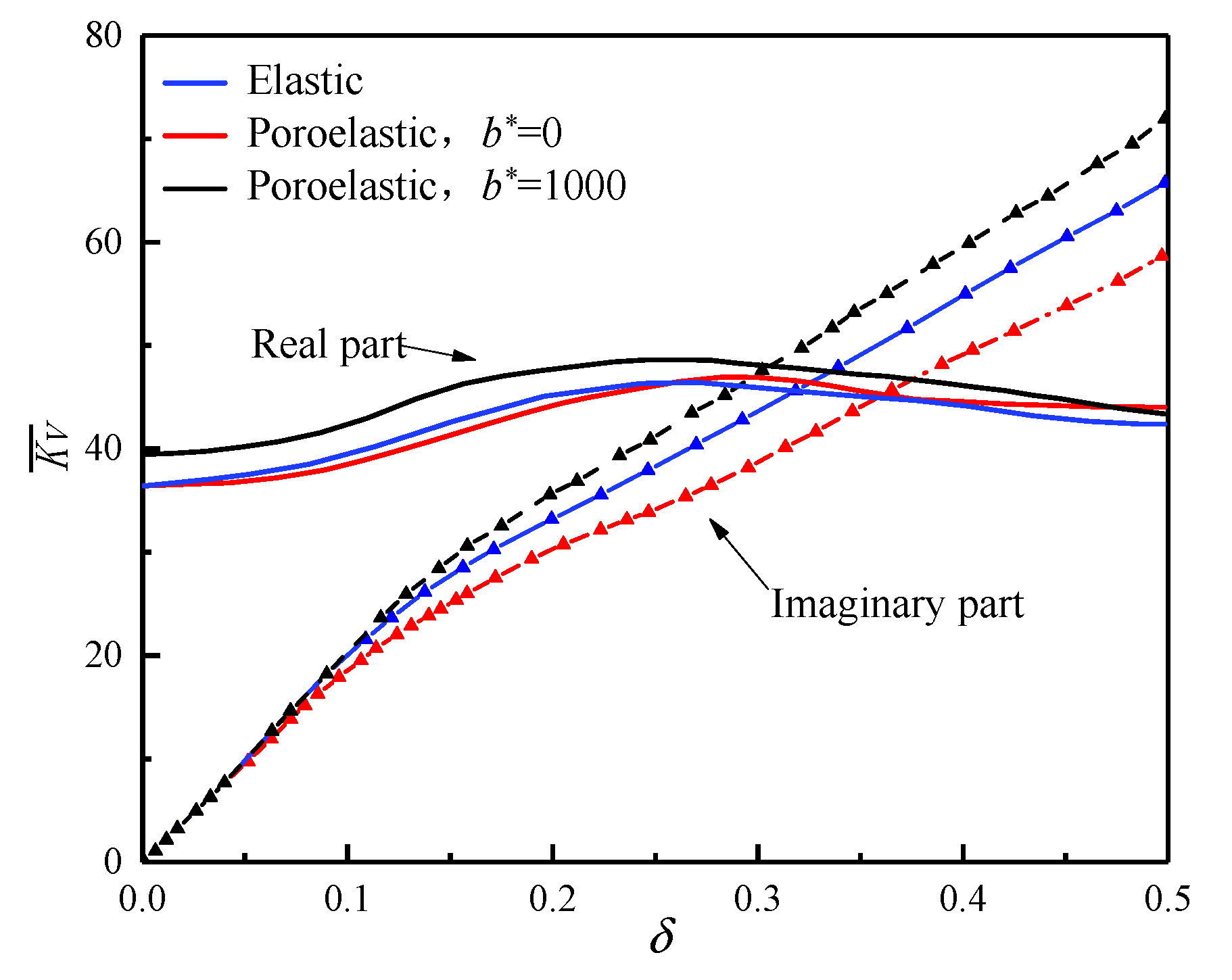
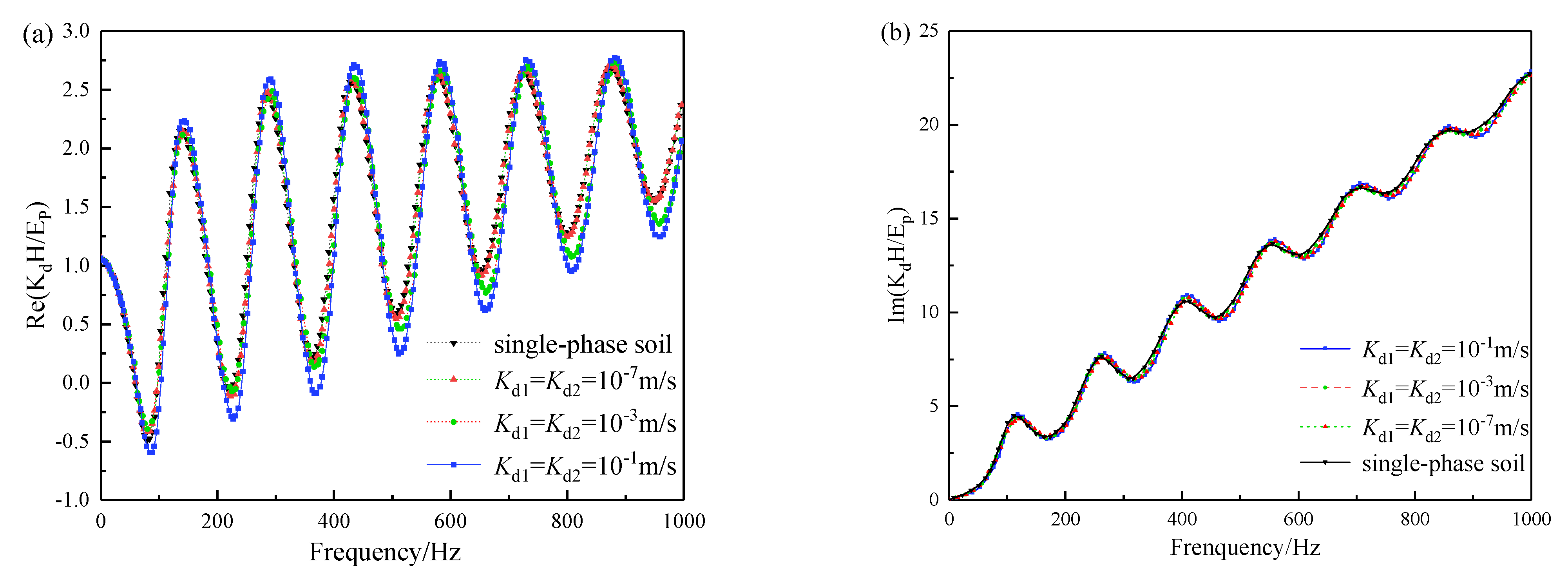



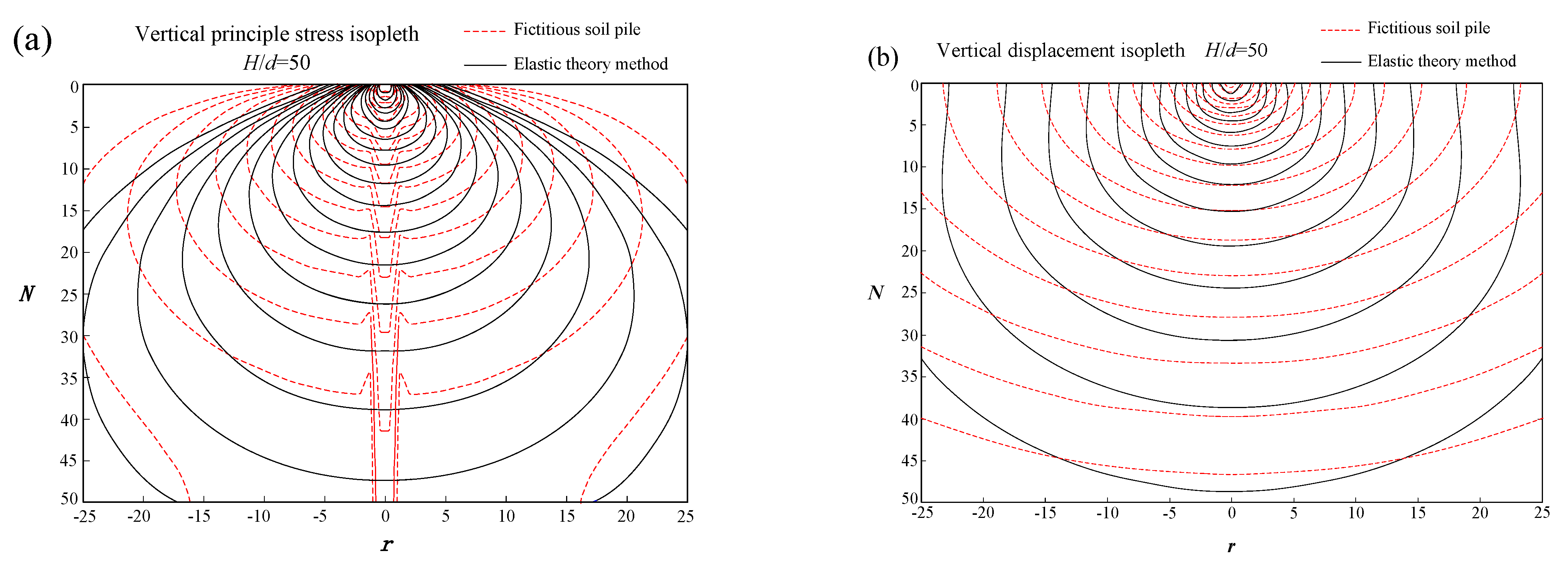
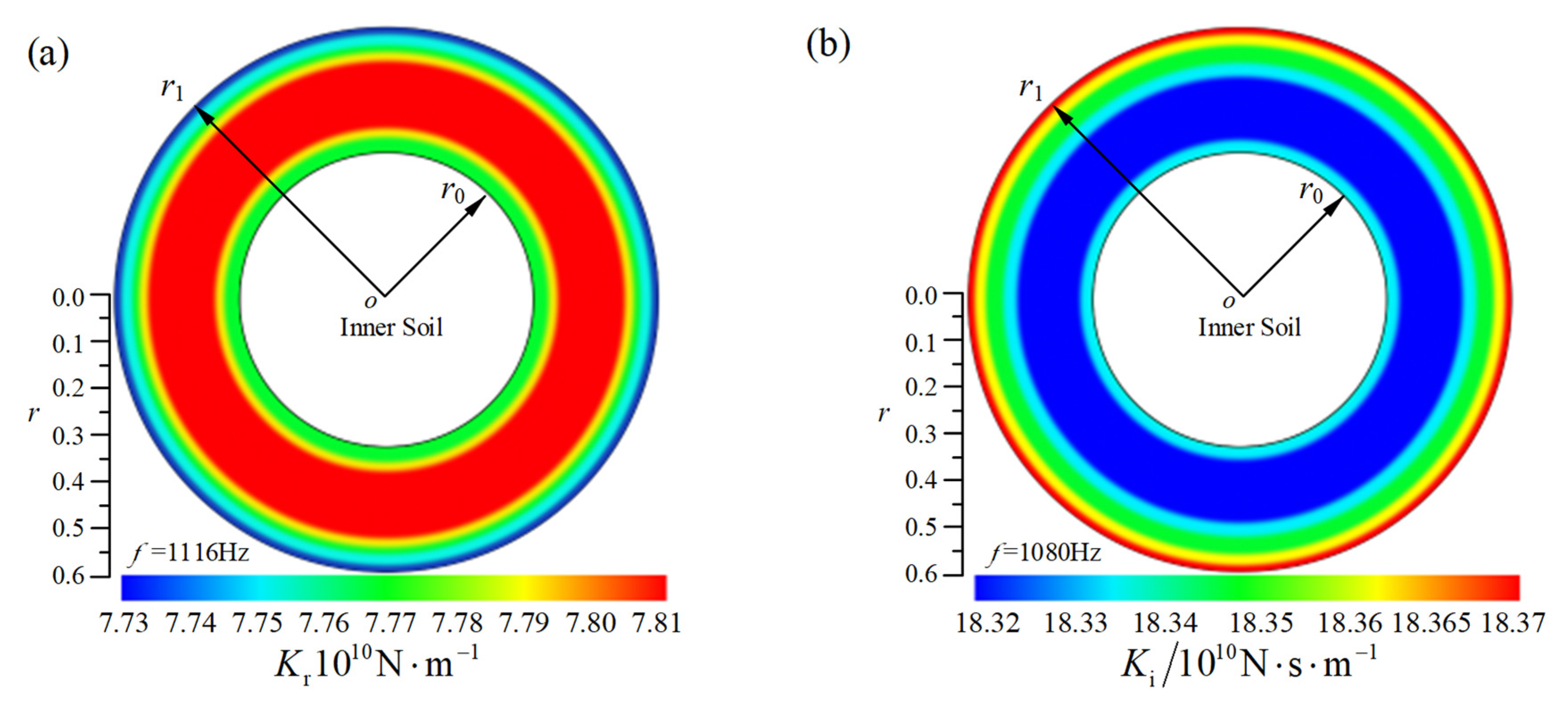


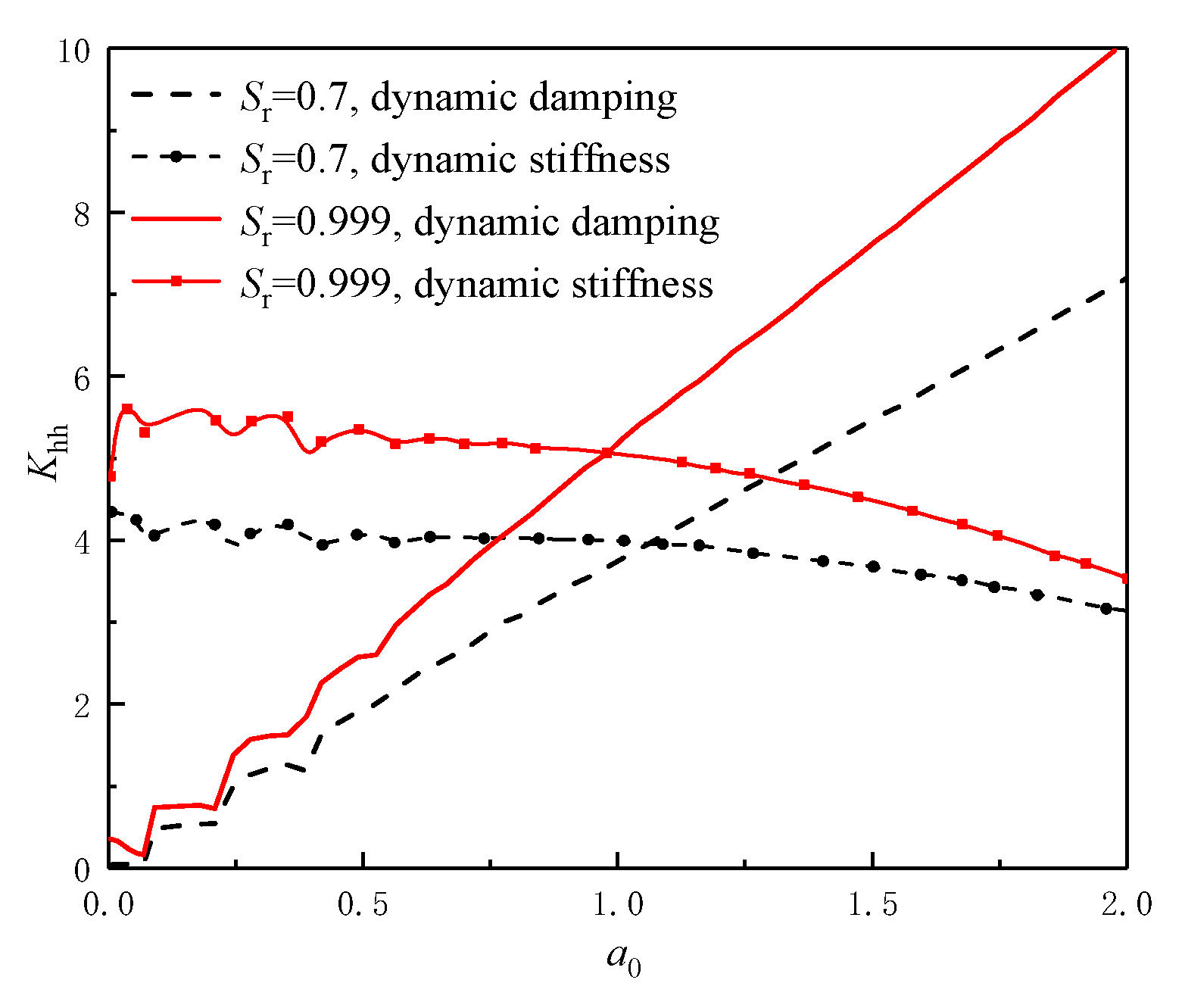
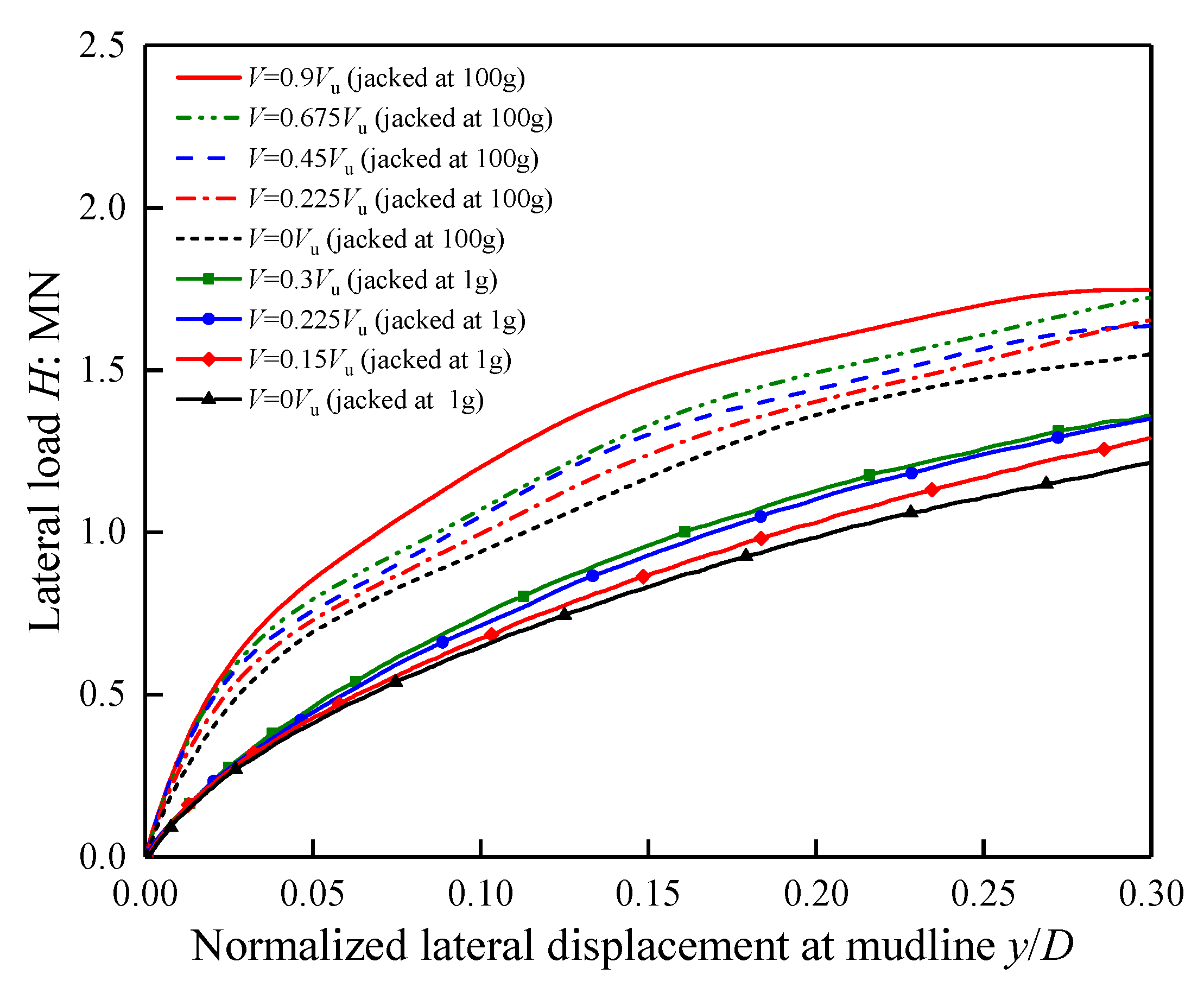
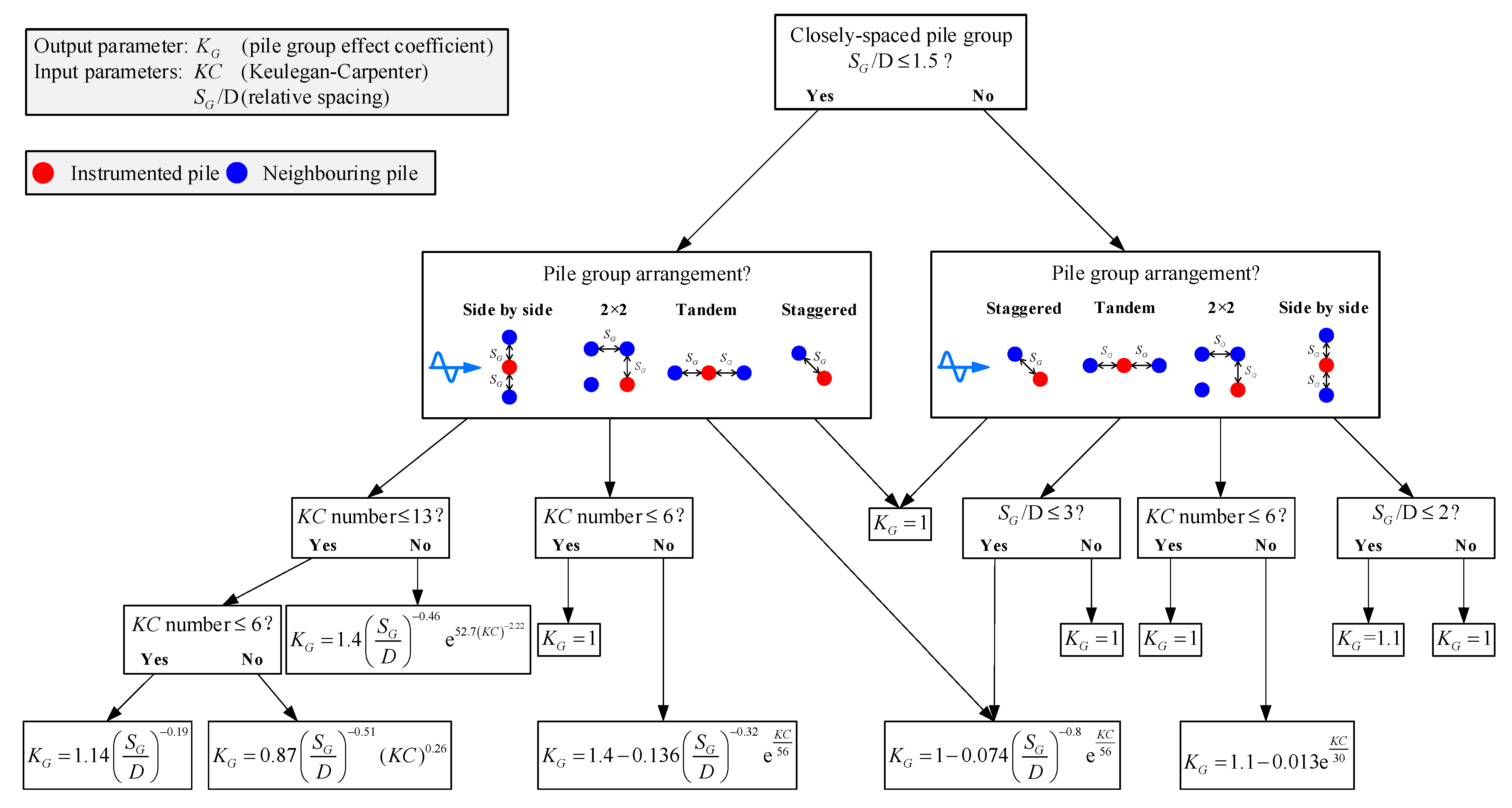
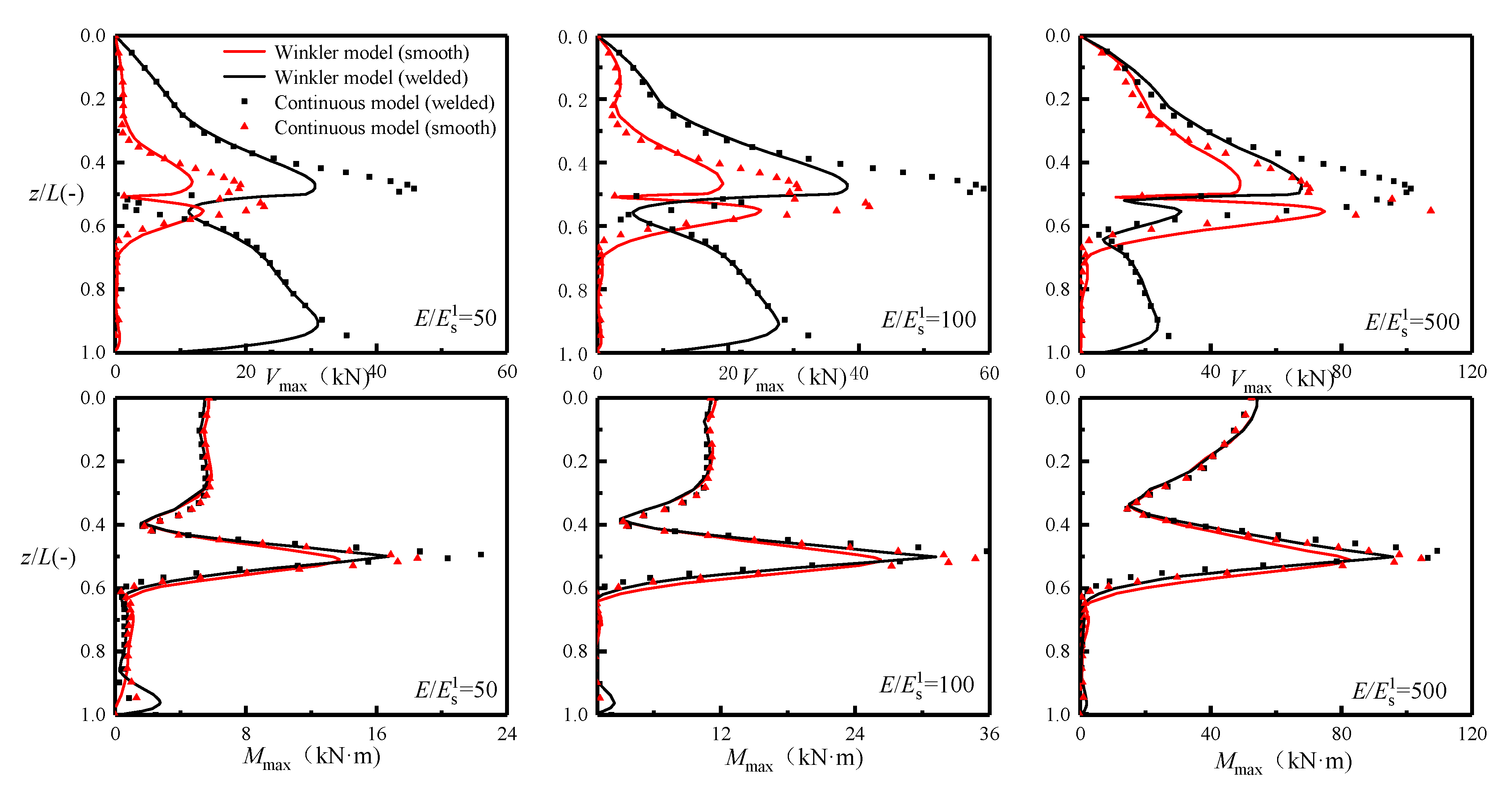
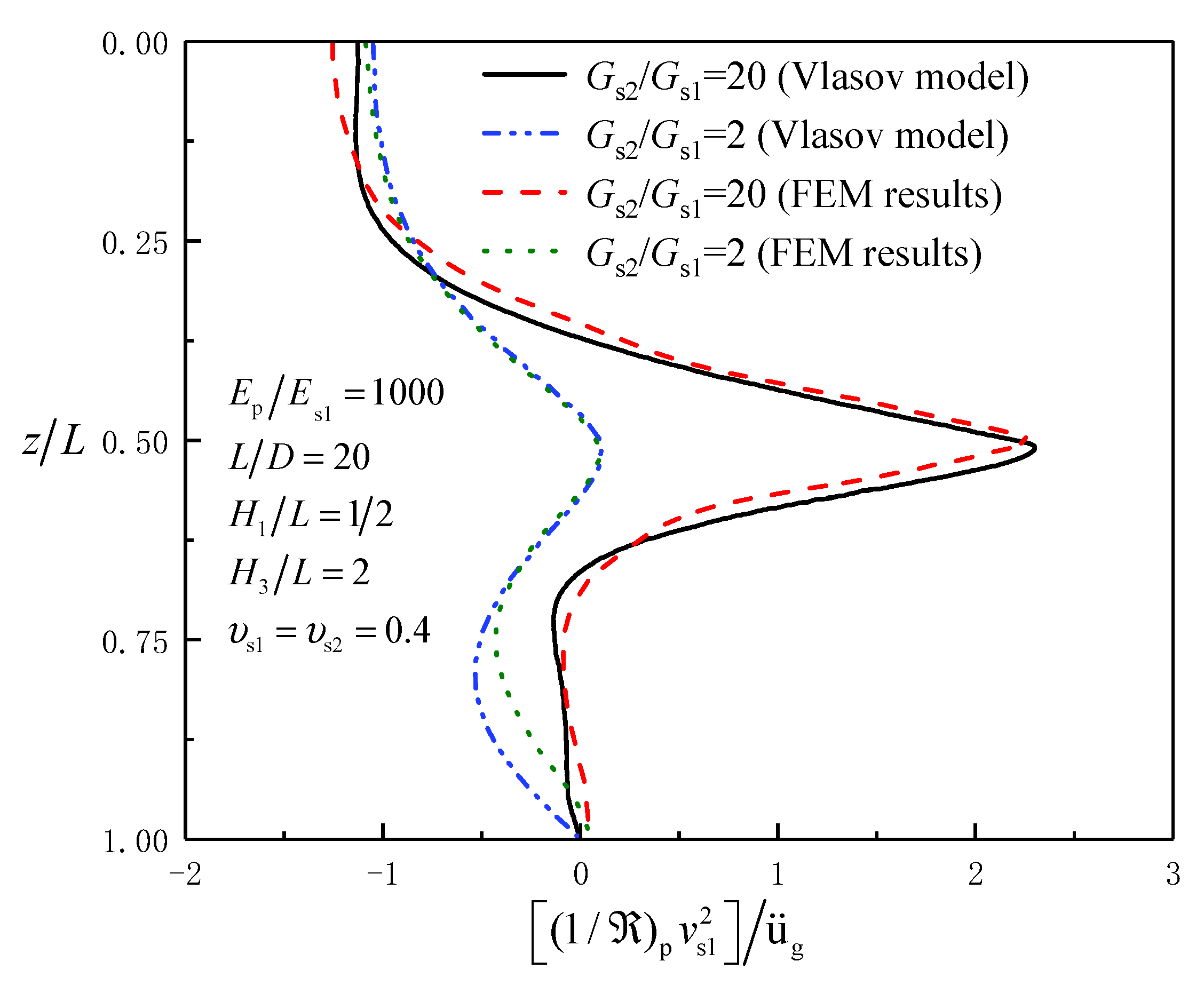
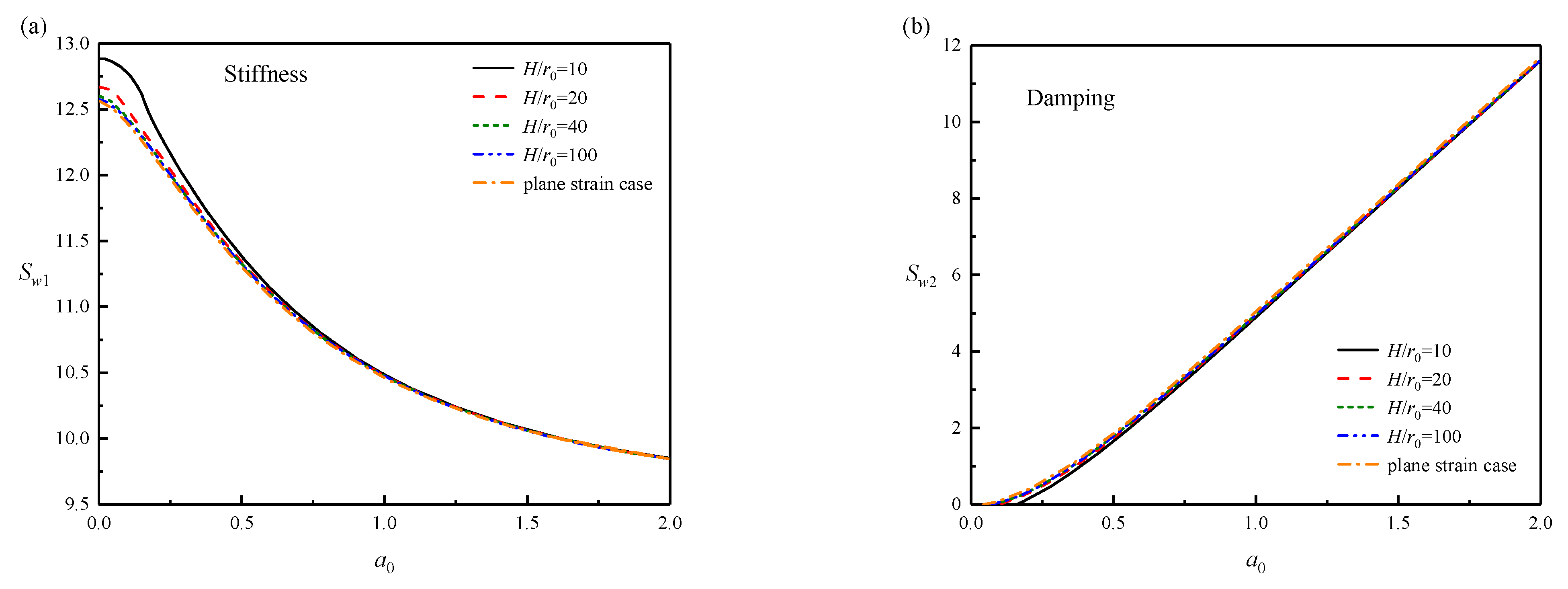

| Source | Passive Pile Deformation Caused by Active Pile | Wave Diffraction Effect | Multi-Phase Nature of Soil | Active Pile Deformation Caused by Passive Pile |
|---|---|---|---|---|
| Kaynia and Kausel [98] | √ | |||
| Dobry and Gazetas [99] | √ | |||
| Mylonakis and Gazetas [100] | √ | √ | ||
| Zhang et al. [101] | √ | √ | ||
| Luan et al. [102,103] | √ | √ | √ |
Publisher’s Note: MDPI stays neutral with regard to jurisdictional claims in published maps and institutional affiliations. |
© 2022 by the authors. Licensee MDPI, Basel, Switzerland. This article is an open access article distributed under the terms and conditions of the Creative Commons Attribution (CC BY) license (https://creativecommons.org/licenses/by/4.0/).
Share and Cite
Wu, W.; Zhang, Y. A Review of Pile Foundations in Viscoelastic Medium: Dynamic Analysis and Wave Propagation Modeling. Energies 2022, 15, 9432. https://doi.org/10.3390/en15249432
Wu W, Zhang Y. A Review of Pile Foundations in Viscoelastic Medium: Dynamic Analysis and Wave Propagation Modeling. Energies. 2022; 15(24):9432. https://doi.org/10.3390/en15249432
Chicago/Turabian StyleWu, Wenbing, and Yunpeng Zhang. 2022. "A Review of Pile Foundations in Viscoelastic Medium: Dynamic Analysis and Wave Propagation Modeling" Energies 15, no. 24: 9432. https://doi.org/10.3390/en15249432
APA StyleWu, W., & Zhang, Y. (2022). A Review of Pile Foundations in Viscoelastic Medium: Dynamic Analysis and Wave Propagation Modeling. Energies, 15(24), 9432. https://doi.org/10.3390/en15249432







